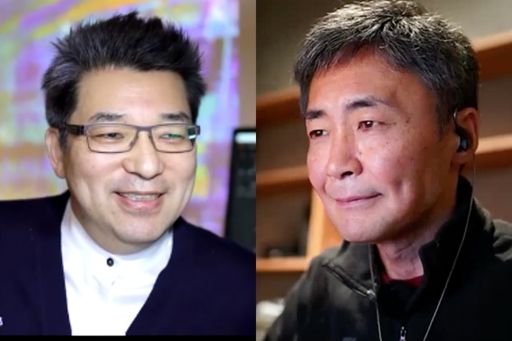Digital transformation is taking place not just at companies but in society as a whole. Companies are allocating considerable resources to realize digital transformation while the government is establishing the Digital Agency to digitalize administrative procedures and realize a digital society “that does not leave anyone behind.”
In order for the benefits of technology to reach a wide range of people, what kinds of ideas and viewpoints will be necessary? Also, with what kind of awareness should companies promote their initiatives?
In this article, we will introduce the discussion on these issues conducted between Masayuki Chatani from KPMG Ignition Tokyo and Hiroko Sasaki, who is successfully working as President of both ChangeWAVE Inc. and Lyxis Co., Ltd.
Contents
- Tackling Organizational Issues and Super-aging Society as “Transformation Designer”
- Ways to Transform Organizations “May Not Necessarily Be Easily Expanded Horizontally”
- Visualizing “Unconscious Bias” with Technology and Implementing It in Society
- “Eijyo College,” Which Supports Female Sales Personnel, Is a Perfect Example of Proving “Society Will Change if People Change”
- Profile of Interviewee
Tackling Organizational Issues and Super-aging Society as “Transformation Designer”
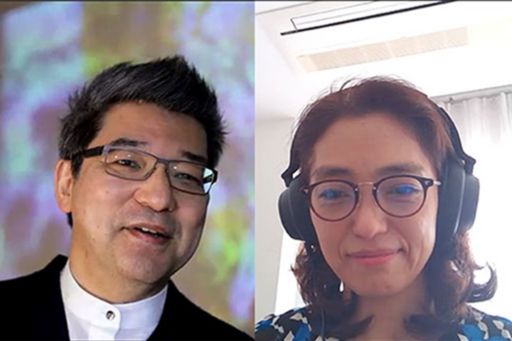
(Masayuki Chatani, Representative Director & CEO of KPMG Ignition Tokyo and CDO of KPMG Japan (left) and Hiroko Sasaki, Founder and CEO of ChangeWAVE Inc. & Lyxis Co., Ltd. (right)) *Professional affiliation and official position in the article are at the time of publication.
Chatani: Sasaki-san, I have known you since about 10 years ago, when you were exercising your skill as a “transformation designer” inside Sony, where I was working then. Today, I would like to ask you about topics including “active learning,” “social issues in the super-aging society,” “unconscious bias,” “regional revitalization” and “Eijyo College” from the standpoint of a transformation designer.
Let’s start by talking about the initiatives of ChangeWAVE. Looking at its website, I was drawn by the phrase “assure transformation that captures the essence and reality.” What made you want to be involved in transformation in the first place?
Sasaki: After I quit McKinsey & Company, where I worked before my previous job, I didn’t work for half a year until I joined Sony. During that time, I was asking myself what it was that I really wanted to do.
While taking various inventories, one thing that came to my mind was what I was often told in the U.S. when I was working for McKinsey, which was “nothing new comes out of Japan” and “the speed of change is slow.” I was wondering from then on “whether this is really true and why Japan is thought of in this way.” When I confronted this theme once again, I started to think, “something must be wrong. Isn’t there anything I can do?” This is one of the factors that spurred me to become a “transformation designer.”
The other factor was when I joined Sony. Sony had been an iconic company since my childhood and I even took the entrance exam as a new graduate. I was able to capture the opportunity to join such a company but, at that time, Sony was in a stage where we could see even from the outside that transformation was really necessary. I thought, “if an iconic Japanese company like Sony can shine, Japan should shine as well!” and started to think of what I could do to realize this.
Just around that time, former President Barack Obama was campaigning for “change!” in his presidential campaign and there was a growing momentum for change in the world. This also made me strongly feel, “it may be possible to actually change things and I want to be a transformation designer that can achieve this!” I also thought that because Sony was going to be the first company that I was going to help transform, this would give me confidence in my future activities. I’m not sure if that succeeded though (laughs).
Chatani: The fact that Sony was the first company to transform must have been a difficult challenge (laughs). Are there any unforgettable memories from that time?
Sasaki: Initially, even though “I wanted to achieve transformation,” I only had a general idea and did not know what had to be done specifically. It was like exploring what it was to be a “transformation designer” at Sony. In other words, I learned all my knowledge leading up to now including specific approaches through actual practices at Sony.
I joined Sony as a contract employee, working for the Transformation Office. Right after becoming a transformation designer, I received an assignment “to submit a future plan.” As I had just joined the company, I naturally did not know what to start with specifically. So, I interviewed various people in the company about “what they thought should be transformed to change Sony?”
Surprisingly, everyone encouraged me, saying “it must be tough” and talked to me about various things. This is how “what must be transformed” became clearer to me.
However, even though what had to be transformed became clearer, I was warned that “such a transformation is not something people in the Corporate Division should do.” This experience was very meaningful for me, as it made me realize that “who is going to do it” and “who is going to initiate it” are very important in transforming an organization. If an outsider suddenly comes along one day and says, “I’m going to transform the company!” that will not resonate with anyone.
Chatani: I guess this experience led to the idea “it is people that need to be changed. Organizations and society will not change unless people change.”
Sasaki: That’s right. Transformation starts gradually when players who have been there from before feel that they “want to do it!”
On the other hand, there are things that can only be ignited by outsiders. I think this may be the only thing outsiders should do.
Chatani: So, what kinds of skills are required of outsiders?
Sasaki: I talked a little bit about it earlier but the advantage of being an outsider is that it is easier to gather information. When I ask, “what should be changed,” people tell me various things on an even ground. I can therefore structure information across organizational frameworks, organize information from a three-dimensional perspective and grasp the entire view.
Organizations are living systems and so we must not misunderstand what kind of situation they are in and who the key players are when making changes. It is essential to understand their status at high resolution, and to be able to do this is probably one of the values of being an outsider. It is like taking an X-ray photo from an overhead view.
Chatani: So, what is important in exercising the value of outsiders?
Sasaki: Speaking from my experience of actually going through trials and errors, I think it is important to “always be respectful to others,”
Things will go smoothly if they think, “this person may be useful. It may not be bad to work with this person” but not when they think, “this person doesn’t understand anything and seems arrogant.”
As people act in an illogical way such as in their likes and dislikes, I think the value of outsiders cannot be exerted unless we show our respect to others so that they will think “it may not be bad to work with this person.”
If we treat others with respect, we will be able to gather information, see where we need to start and create personal relationships that will allow us to hear what they really think. We will also be able to undergo trials and errors. What I learned from my experience at Sony is that these processes are very important.
Ways to Transform Organizations “May Not Necessarily Be Easily Expanded Horizontally”
Chatani: I thought that the work of ChangeWAVE is to support the transformation of corporate organizations as a “transformation designer” but I now feel that its vector is in fact broad. In particular, I couldn’t help wonder “why?” regarding the regional revitalization project. What made you go into this project?
Sasaki: This does not apply only to the regional revitalization project but at ChangeWAVE, projects have progressed through encounters with people without developing any business plans. As for the regional revitalization, this started when I happened to sit next to Takashi Yamada, a municipal worker at Shiojiri City who subsequently published a book called “The Funniest Public Servant in Japan (Nikkei Publishing Inc.),” at a meeting.
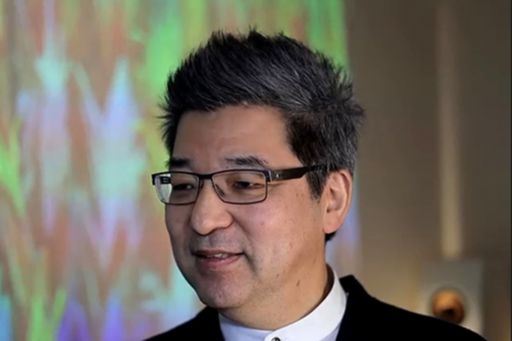
I had never been involved in regional revitalization activities until then and felt like I didn’t belong in that meeting. I expressed this strange feeling and Yamada-san, who heard this, took an interest in me. He said, “I want a straight business person who has not been involved in regional revitalization to help us from now on.”
Meanwhile, I myself knew that executives and HR personnel of companies wanted to have their executive candidates “go through disastrous experiences in this age of VUCA and resolve social issues with people they have never met before.”
I then thought that it would be interesting to put these two together. We talked about it at the meeting for about 30 minutes and decided to start a project. The project that started from this coincidence has been continuing for six years now.
Chatani: So, it was the product of a great coincidence and speed. Are you planning to expand this activity to other communities as well?
Sasaki: We were initially planning to expand it but ChangeWAVE is now providing support in a different way.
Both the top leader and staff members of Shiojiri City, which started the “MICHIKARA Regional Revitalization Cooperation Leadership Program,” were all quite flexible and highly motivated to take on a challenge. Also, as the community was a good size to be very flexible, the project proceeded quite smoothly. The fact that the agendas of both parties were aligned was probably a key point too. However, no two communities are alike in terms of scale, organizational structure, the relationship with the city assembly and the directions aimed at by the community. We therefore realized that it would not be possible to develop it horizontally in the same form.
Yamada-san is now trying to spread the reformation as an evangelist by writing about MICHIKARA in his own books, employing a CXO (Chief Executive Officer) from the private sector for a limited time and compiling the knowhow of the initiatives from the viewpoint of staff members of a local community.
Chatani: The heads of local communities are indeed incredibly unique. I hear that Shiojiri City has many wineries and good local wine. I very much look forward to seeing how the city will unlock their future going forward.
Visualizing “Unconscious Bias” with Technology and Implementing It in Society

Chatani: I believe that you yourself were newly stimulated through this experience at Shiojiri City. I would like to ask you now about the e-learning tool “Angle” for executives. I hear that it was developed based on the concept of changing people.
Sasaki: That’s right. While focusing on the promotion of diversity and women’s participation for about five years as a “transformation designer,” I often felt that progress was slow. It was advancing little by little but I felt that there was “something” rooted deep within.
Meanwhile, I received a request to speak on the theme of “diversity” from a certain venture company. This made me think, “why do venture companies that have a liberal mindset worry about implementing diversity?” I looked into what venture companies in Silicon Valley were doing to implement diversity. This is when I encountered the word “unconscious bias.”
“Unconscious bias” itself is not a new word or way of thinking and has been discussed as one of the themes of social psychology for decades. It is also known that it is possible to quantify and visualize the level of unconscious bias. I then started to think that something may occur if this can be implemented in society.
At the same time, as I was also wondering “is it possible to carry out transformation utilizing IT or technology?” we started to develop e-learning by combining the “visualization of unconscious bias” and “utilization of IT.”
“Eijyo College,” Which Supports Female Sales Personnel, Is a Perfect Example of Proving “Society Will Change if People Change”
Chatani: Talking about diversity, you are also promoting a project called “Eijyo College,” which aims to develop female sales personnel and sales transformation in different industries.
Sasaki: Launching “Eijyo College” was an experience of writhing in agony (laughs). But now, I think this support for female sales personnel has become a good example of how “society will change if people change” is actually being put into practice.
“Eijyo College” started when I was lecturing on behalf of ChangeWAVE in leadership development training at a major company. A woman participating in the training who was then head of the Diversity Promotion Office told me about her feelings: “If we’re going to promote diversity, I want to change not just our company but the whole world. I wonder if there is anything we can start doing in different sectors.”
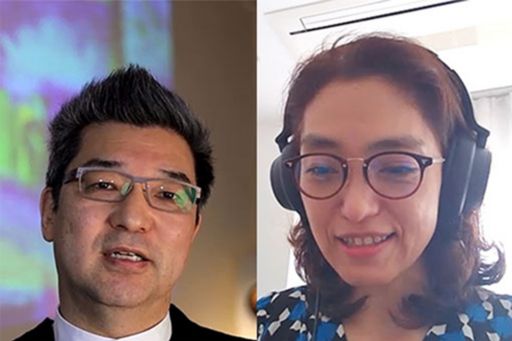
After this, she exerted great leadership, which led to the launch of “Eijyo College” by seven major companies to explore the background issue of why the participation of women is not advancing in the area of “sales.” I also decided to participate as a facilitator.
This initiative generated a lot of great suggestions on management and also attracted attention, as it was covered by the media, especially TV. However, it was difficult to increase the number of participants just by making management suggestions by cross-industrial teams.
This was when I thought, “why not have the participating companies compete by conducting practical experiments and presenting the outcomes.” I thought that practicing rather than discussing would accelerate the movement.
When we actually ran this model, the number of participating companies and people increased considerably and many destructive practical experiments were generated. There was also an advantage that the executives could easily decide whether to introduce them at their company, as they had already been proved to be feasible and generate outcomes at the worksite.
We set up five evaluation criteria for the practical experiments: (1) Is it breaking the norm?; (2)Is productivity increased?; (3) Is customer value enhanced?; (4)Can it be broadly utilized?; and (5) Does it have the ability to get people involved?
While teams of five female sales personnel work hard to implement the practical experiments, they directly negotiate with the executives or involve the management team to achieve (5) “the ability to get people involved.” In a sense, they are shouldering the reputation of their company when their practical experiments are screened by the judges together with those of other companies.
It is very interesting that when they pass the first screening, this gradually draws internal attention, with the entire company getting excited. There is an increasing number of companies supporting the initiative company-wide with heated excitement. I hear that when the experiment goes through the second and final screenings, the excitement of the management also starts to increase, and they say, “if we’re going to compete, let’s aim for the Grand Prize!”
As the finalist and Grand Prize teams often receive requests for media coverage, this ends up applying pressure on management, in a good sense, to decide whether they are going to develop what was tested on a full scale. A mechanism to provoke ripples of change like this has been incorporated in the “Eijyo College” project.
Profile of Interviewee
Hiroko Sasaki
Founder and CEO of Lyxis Co., Ltd.
Founder and CEO of ChangeWAVE Inc.
Hiroko Sasaki is the Founder and CEO of Lyxis, a human resources and healthcare technology company committed to redesigning elderly care. Under her leadership, the company launched LCAT, a human resources cloud service focused on assisting workers in balancing work and family care. Before founding Lyxis, she was the Founder and CEO of ChangeWAVE, where she initiated and designed transformation projects in innovation, diversity and inclusion, globalisation and change management for more than 200 organisations, including leading corporations and local governments.
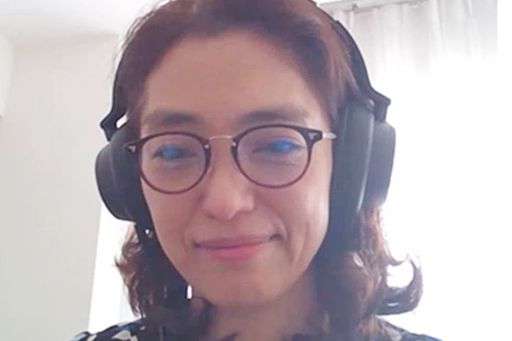
Follow us on KPMG Ignition Tokyo LinkedIn for the latest news.
Connect with us
- Find office locations kpmg.findOfficeLocations
- kpmg.emailUs
- Social media @ KPMG kpmg.socialMedia




